Oxycodone 80mg Reviews: Insights from Users and Medical Experts on Effectiveness
Oxycodone 80mg is a prescription opioid analgesic primarily prescribed for the management of severe, chronic pain that cannot be adequately controlled with other medications. It is part of a class of drugs known as opioid agonists, which work by binding to specific receptors in the brain and nervous system to alter the perception of pain. Oxycodone is available in both immediate-release and extended-release formulations, but the 80mg dose is typically only available as an extended-release tablet, such as OxyContin.
Due to its potency, Oxycodone 80mg is generally reserved for opioid-tolerant patients—individuals who are already taking opioids regularly and have developed a tolerance to their effects. Misuse or inappropriate use of this medication can lead to addiction, overdose, or death.

What is Oxycodone 80mg Used For?
Oxycodone 80mg is indicated for the management of severe pain where alternative treatments are insufficient. Common scenarios include:
-
Cancer-related pain
-
Post-surgical pain in opioid-tolerant individuals
-
Severe musculoskeletal disorders
-
Injury-related pain
-
Neuropathic pain when other therapies fail
Because it is an extended-release (ER) formulation, this medication provides around-the-clock pain relief and is not intended for as-needed use for minor or occasional pain.
How Oxycodone 80mg Works
Oxycodone works by acting on the mu-opioid receptors in the brain and spinal cord. These receptors are involved in the perception of pain and the emotional response to pain. When activated by oxycodone, they produce:
-
Pain relief (analgesia)
-
Sedation
-
A sense of euphoria (which can contribute to misuse)
-
Respiratory depression
The extended-release version slowly releases the drug over a period of 12 hours, providing long-lasting pain control. It does not offer immediate relief and should not be used for acute pain episodes.
Proper Usage and Dosage Guidelines
Dosage Considerations
The standard dose of Oxycodone 80mg is prescribed only after assessing a patient’s opioid tolerance and overall medical condition. Patients who have not been exposed to opioids should never start at 80mg, as this dosage can be life-threatening.
How to Take Oxycodone 80mg
-
Swallow tablets whole with water.
-
Do not crush, chew, break, or dissolve the tablet, as this can release the full dose at once, increasing the risk of overdose.
-
Take with or without food, though taking with food may help reduce nausea.
-
Follow your doctor’s exact instructions—never alter the dose on your own.
Missed Dose Protocol
If you miss a dose, take it as soon as you remember, unless it’s almost time for your next scheduled dose. Do not double your dose to make up for a missed one.
Who Should Not Take Oxycodone 80mg?
Oxycodone 80mg is not appropriate for everyone. It is contraindicated in the following conditions:
-
Opioid-naïve individuals
-
Severe respiratory depression
-
Acute or severe asthma
-
Paralytic ileus (bowel blockage)
-
Known hypersensitivity to oxycodone or other opioids
Caution is required for those with:
-
Head injuries
-
Liver or kidney dysfunction
-
Sleep apnea
-
Mental health disorders
-
Substance abuse history
Always disclose your full medical history and current medications to your doctor before beginning treatment.
Side Effects of Oxycodone 80mg
Like all opioids, Oxycodone 80mg carries a range of common and serious side effects. While many people tolerate the medication well under medical supervision, others may experience complications.
Common Side Effects
-
Constipation (very common; often requires a laxative)
-
Nausea or vomiting
-
Drowsiness or sedation
-
Dizziness or lightheadedness
-
Dry mouth
-
Sweating
Serious Side Effects
-
Respiratory depression (slowed breathing)
-
Severe hypotension (low blood pressure)
-
Bradycardia (slow heart rate)
-
Seizures
-
Confusion or hallucinations
-
Addiction or dependency
If any serious side effects occur, seek medical attention immediately.
Addiction and Abuse Potential
Oxycodone 80mg is classified as a Schedule II controlled substance under the Controlled Substances Act due to its high potential for abuse and dependence. Even patients taking the drug exactly as prescribed can develop physical dependence, and abrupt cessation can result in withdrawal symptoms, including:
-
Muscle aches
-
Sweating
-
Nausea
-
Irritability
-
Insomnia
-
Anxiety
Psychological addiction is also a major concern. The euphoric effects that oxycodone can produce—especially at high doses—make it a target for misuse.
To reduce risks:
-
Follow your doctor’s tapering instructions when discontinuing
-
Never share your medication with others
-
Store in a secure location, ideally locked
Overdose Risks and What to Do
Oxycodone overdose is a medical emergency. It can lead to severe respiratory depression, unconsciousness, and death. If you suspect an overdose, call emergency services (911) immediately.
Symptoms of Oxycodone Overdose
-
Shallow or slowed breathing
-
Blue lips or fingernails
-
Cold or clammy skin
-
Pinpoint pupils
-
Loss of consciousness
-
Inability to wake up
The opioid reversal agent naloxone (Narcan) may be administered by first responders or trained individuals to reverse the effects.
Interactions with Other Medications and Substances
Oxycodone 80mg can interact dangerously with other substances, especially those that affect the central nervous system. Some of the most critical interactions include:
Do Not Combine With:
-
Alcohol
-
Benzodiazepines (e.g., diazepam, lorazepam)
-
Other opioids
-
Muscle relaxants
-
Antipsychotics
-
Sleep aids
Inform Your Doctor If You Take:
-
MAO inhibitors
-
Serotonergic drugs
-
Antidepressants
-
Antifungals
-
Antibiotics
-
Seizure medications
Always consult your pharmacist or physician before adding or stopping any medication.
Safe Storage and Disposal of Oxycodone 80mg
Storage Guidelines
-
Keep oxycodone in a cool, dry place away from light and humidity.
-
Store it in a locked cabinet or safe, out of reach of children, pets, and others.
-
Avoid storing in places with temperature fluctuations, such as bathrooms.
Disposal Instructions
-
Do not flush unless instructed.
-
Participate in drug take-back programs.
-
If no take-back option is available, mix the tablets (uncrushed) with an unpalatable substance (e.g., dirt or coffee grounds) and seal in a plastic bag before placing in the trash.
Pregnancy, Breastfeeding, and Special Populations
Pregnancy
Oxycodone can cross the placenta and may cause neonatal opioid withdrawal syndrome (NOWS) in newborns. It is generally not recommended during pregnancy unless absolutely necessary.
Breastfeeding
Oxycodone can be excreted in breast milk, potentially causing sedation or respiratory problems in the infant. Nursing mothers should consult a physician to weigh risks and benefits.
Elderly Patients
Older adults are more sensitive to the sedative and respiratory-depressant effects of oxycodone. Starting doses should be lower, with careful monitoring.
Tips for Safe Use of Oxycodone 80mg
-
Take as prescribed—no more, no less.
-
Communicate with your doctor if pain persists or side effects worsen.
-
Avoid driving or operating machinery until you understand how the drug affects you.
-
Use a stool softener or laxative to manage constipation.
-
Stay hydrated and maintain a balanced diet to support digestive function.
-
Do not share your medication under any circumstance.
Summary and Final Thoughts
Oxycodone 80mg is a powerful and effective pain management tool for patients with severe, chronic pain who have developed tolerance to other opioids. However, its strength also means it comes with significant risks, including dependence, abuse, and overdose. When used responsibly, under strict medical supervision, it can dramatically improve quality of life for individuals struggling with long-term pain.
Always use opioids with caution and remain vigilant for any signs of misuse or complications. Keep an open line of communication with your healthcare provider, and never adjust your dosage without professional guidance.
Oxycodone 80mg – Frequently Asked Questions (FAQs)
1. What is Oxycodone 80mg used for?
Oxycodone 80mg is a strong prescription opioid pain medication used to manage severe pain that requires long-term, around-the-clock treatment. It is typically prescribed when other pain treatments are not effective.
2. How should I take Oxycodone 80mg?
This medication should be taken exactly as prescribed by your healthcare provider. It is usually taken orally, every 12 hours, and should not be crushed, broken, or chewed, as doing so can release the full dose at once, increasing the risk of overdose.
3. Can Oxycodone 80mg be taken for minor pain or short-term use?
No. Oxycodone 80mg is a high-dose opioid intended for chronic, severe pain. It is not suitable for mild pain or short-term use due to its potency and risk of dependency.
4. What are the side effects of Oxycodone 80mg?
Common side effects include:
-
Drowsiness
-
Nausea or vomiting
-
Constipation
-
Dizziness
-
Dry mouth
Serious side effects can include:
-
Respiratory depression
-
Low blood pressure
-
Confusion or sedation
-
Risk of overdose
Always report unusual or severe symptoms to your doctor immediately.
5. Is Oxycodone 80mg addictive?
Yes. Oxycodone is an opioid, which can be habit-forming. Misuse can lead to addiction, overdose, or death, especially in those without a tolerance to opioids.
6. Can I drink alcohol while taking Oxycodone 80mg?
No. Combining alcohol with Oxycodone can be extremely dangerous and may result in fatal side effects, such as severe respiratory depression or coma.
7. What should I do if I miss a dose?
If you miss a dose, take it as soon as you remember. If it’s almost time for your next dose, skip the missed one—do not double up. Follow your doctor’s instructions carefully.
8. How should I store Oxycodone 80mg?
Store the medication at room temperature, away from moisture and light. Keep it in a secure location out of reach of children, pets, and anyone for whom it was not prescribed.
9. Can I stop taking Oxycodone 80mg suddenly?
No. Do not stop abruptly, as this can cause withdrawal symptoms. Your doctor will guide you on how to taper off the medication safely.
10. What should I do in case of overdose?
Call 911 immediately. Signs of overdose include:
-
Difficulty breathing
-
Extreme drowsiness
-
Cold or clammy skin
-
Blue lips or fingernails
-
Loss of consciousness
Emergency treatment (like naloxone) may be required.


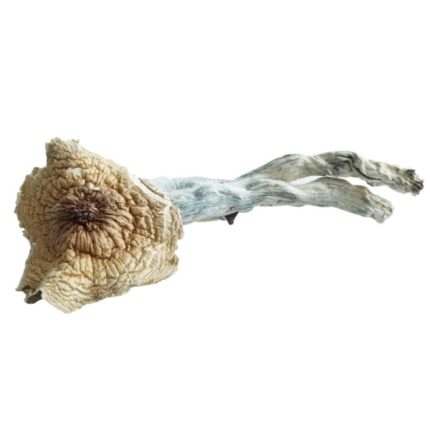




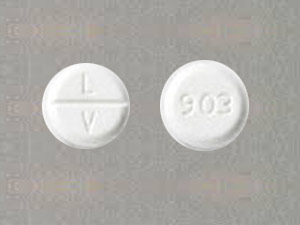

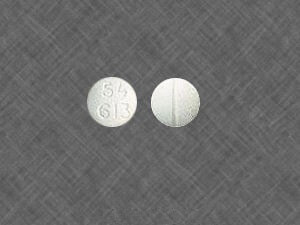
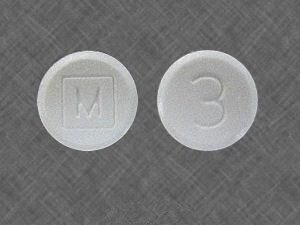



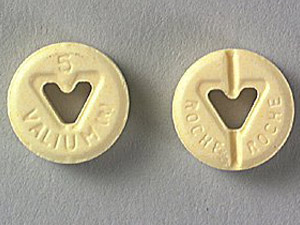

Reviews
There are no reviews yet.